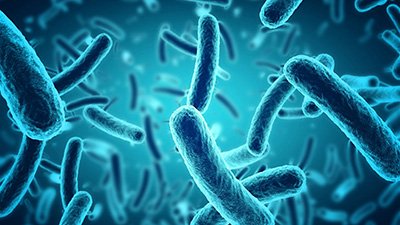
Evolutionary Bottleneck: All Multicellular Organisms Begin as One Cell
The good of the one outweighs the good of the few and the many—the single-cell bottleneck that unleashes multicellular evolutionary potential(?)
News Source
Since evolution is about survival of the fittest, evolutionists have a problem explaining evolution of multicellular organisms. After all, why would non-reproducing cells evolve a “willingness” to spend their lives functioning sacrificially for the good of the group just so one cell—a lowly gamete—can pass on its genome? Researchers from Rice University tinkered with the “social contract” of the amoeba Dictyostelium discoideum to find out.
These common amoeba, a.k.a. Dicty, roam the dirt searching for bacteria to eat. When food becomes scarce, they team up, traveling as a slug-shaped colony until they reach a good spot for dispersal. Then the front 20% sacrifice their reproductive potential by forming a fruiting body—a sort of a stalk—upon which the other cells can form spores, ensuring the survival of their own genomes. But what about lone-wolf mutants—“cheaters”—those microbes more “concerned” with their own survival than with helping their fellow Dicty? Believing the altruistic tendency evolved to ensure Dicty-ian survival, the team wished to determine the impact of “cheaters” on future generations. After all, if “cheaters” swamp the population, there wouldn’t be enough Dicty left to form fruiting bodies.
The team first examined mutations “cheaters” could use to gain a position in the back of colony—such as decreased adhesion to other cells allowing them to simply slip to the rear. Having identified the mutations microbes could use to “cheat death,” they then needed to determine the statistical impact of “cheaters” on amoeba populations.
Normally amoebae in a colony are clonally related, so the team artificially formed colonies of mixed lineages. In the mixed colonies, “cheaters” could get the upper hand and ruin their lineage’s opportunity to survive hard times. However, “conflict reduction via clonality”1 resulted in successful propagation in the unmixed clonally-related laboratory colonies and in similar colonies of wild amoebae.
Evolutionists believe cellular cooperation was essential for evolution of multicellular organisms. The team concluded “ancient jockeying for position in the germ line”2 wasn’t a statistically significant problem for cellular cooperation so long as the evolving multicellular species could periodically pass through a single-cell genetic bottleneck. Hence, by extrapolating their results to Dicty-colonies the size of mice, humans, and blue whales—and even to sociobiological conundrums like social insects—the Rice team is confident they’ve solved the mystery of the rise of multicellularity. That, they believe, explains why most multicellular organisms start life as a zygote.
No case of a multicellular organism evolving from a single-celled one has ever been observed.
No case of a multicellular organism evolving from a single-celled one has ever been observed. Nor is there in nature any mechanism by which a single-celled organism can acquire the genetic information to differentiate and organize its progeny into complex multicellular organisms. Zygotes already possess the genetic information to do just that. Zygotes obtain that information from parent organisms of their own kind. God created microbes and multicellular organisms of all kinds to reproduce after their kinds during Creation week about 6,000 years ago. Nothing observable in biology bears up as evidence against His Word. He designed microbes to reproduce after their kinds, even exchanging genetic information horizontally, in order to equip them to propagate and fulfill their functions in this world. But He did not equip them to evolve into new multicellular life-forms.
Further Reading
For More Information: Get Answers
Remember, if you see a news story that might merit some attention, let us know about it! (Note: if the story originates from the Associated Press, FOX News, MSNBC, the New York Times, or another major national media outlet, we will most likely have already heard about it.) And thanks to all of our readers who have submitted great news tips to us. If you didn’t catch all the latest News to Know, why not take a look to see what you’ve missed?
(Please note that links will take you directly to the source. Answers in Genesis is not responsible for content on the websites to which we refer. For more information, please see our Privacy Policy.)
Footnotes
- Jennie Kuzdzal-Fick, Sara A. Fox, Joan E. Strassmann, David C. Queller, “High Relatedness Is Necessary and Sufficient to Maintain Multicellularity in Dictyostelium,” Science 334, no. 6062 (December 16, 2011): 1548–1551, doi:10.1126/science.1213272.
- Ibid.
Recommended Resources

Answers in Genesis is an apologetics ministry, dedicated to helping Christians defend their faith and proclaim the good news of Jesus Christ.
- Customer Service 800.778.3390
- © 2024 Answers in Genesis






